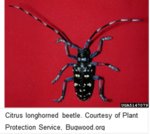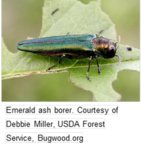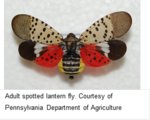


The Washington Invasive Species Council is asking residents to check trees and swimming pools around their property for harmful bugs as a part of the Tree Check Month. August is the peak time of year to look for invasive bugs and report species that seem out of place. Trees near homes and in urban areas are just as susceptible to pests as trees in rural and wild forests.
According to the council, since 1990, over 70 new insect species have been detected in Washington State and the public found 36% of the new insects first.
“This just highlights the importance of reporting any species that you suspect might be a problem,” Justin Bush, executive coordinator of the Washington Invasive Species Council said in the release. “Researchers and scientists are surveying for these species statewide, but we need the public’s help. By taking a few minutes of your time, you could help the state prevent and control the spread of invasive species, which pose a $1.3 billion threat to Washington’s economy every year and put our environment and human health at risk.”
In addition to checking trees, experts recommend pool owners to check pool skimmers and filters for invasive bugs because emerging adult insects tend to get stuck and end up as debris in pool filters and skimmers.
Residents who see any invasive insects or signs of them should take photographs and report the findings online at inva
sivespecies.wa.gov/report.shtml where they can access the reporting form and download the app.
According to the council, first indications of invasive insect damage to trees include sudden dieback or death, sawdust and exit holes.
While the three species are not known to be in Washington state, they have the potential to spread by way of contaminated firewood, shipping and moving.
“The possible pathways for moving invasive species are endless and it is likely that at some point invasive insects will slip into Washington,” Bush said in the release. “It’s key that we find new invasive species as quickly as possible so that the threat can be contained and addressed so that it does not establish and cause long-lasting impacts.”